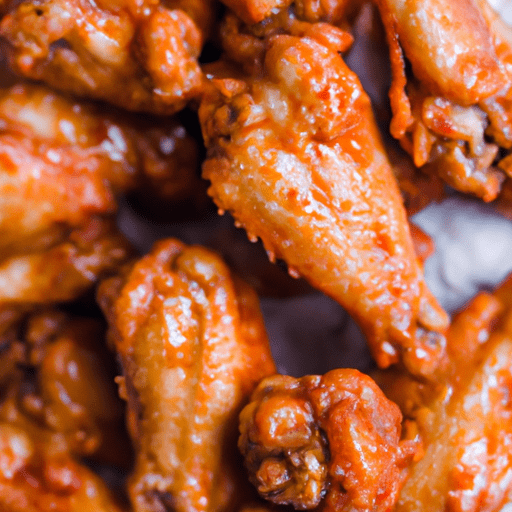The Ultimate Guide to Boneless Chicken Wings
If you’re a fan of chicken wings, but prefer a boneless option, then boneless chicken wings are the perfect choice for you. These bite-sized pieces of chicken are packed with flavor, making them a popular choice among food enthusiasts. In this article, we’ll explore everything you need to know about boneless chicken wings – from their taste and common uses in cooking to their nutritional value and interesting history.
Taste and Texture
Boneless chicken wings offer all the savory flavors and juicy tenderness of traditional wings, minus the hassle of dealing with bones. Made from boneless chicken breast or thigh meat, these bite-sized pieces are coated in a flavorful batter or breading and then fried to perfection. The result is a deliciously crispy and tender chicken morsel that is bursting with flavor. Whether you prefer them spicy, tangy, or sweet, boneless chicken wings can be customized to suit a variety of tastes.
Common Uses in Cooking
Boneless chicken wings are incredibly versatile and can be used in various dishes and cuisines. Here are some popular ways to enjoy these flavorful bites:
Appetizers: Serve boneless chicken wings as an appetizer at parties, game nights, or gatherings. They are perfect for dipping in sauces like buffalo, barbecue, or ranch.
Sandwiches and Wraps: Create mouthwatering sandwiches and wraps by stuffing boneless chicken wings into a soft bun or tortilla, along with your favorite toppings.
Salads: Add a touch of protein to your salads by tossing some crispy boneless chicken wings on top. It adds a satisfying crunch and elevates the overall taste.
Tacos: Stuff warm tortillas with boneless chicken wings, fresh veggies, and a drizzle of creamy sauce for a delightful twist on traditional tacos.
Nutritional Value
When it comes to nutritional value, boneless chicken wings offer a good balance of protein and fat. Here’s a quick breakdown of their nutritional content:
- Protein: Boneless chicken wings are an excellent source of protein, which aids in muscle growth and repair.
- Fat: The breading or batter used to coat boneless chicken wings adds some fat. Opting for baked or grilled options can help reduce the overall fat content.
- Calories: The calorie count of boneless chicken wings can vary depending on the cooking method and the type and amount of sauce used.
As with any food, moderation is key. Pair boneless chicken wings with a side of vegetables or a colorful salad to create a well-rounded meal.
Interesting Facts and History
- Despite their name, boneless chicken wings are not actually wings. They are typically made from chicken breast or thigh meat, while traditional wings come from the wing section of the chicken.
- Boneless chicken wings gained popularity in the 1970s as an alternative for those who didn’t like dealing with the bones in traditional wings.
- Although boneless chicken wings are commonly associated with American cuisine, variations of boneless chicken dishes can be found in various cultures, such as Asian-style sweet and sour chicken.
Conclusion
Boneless chicken wings offer all the flavors and textures that chicken wing enthusiasts love, without the bones. From their versatile use in cooking to their diverse flavor profiles, they are a crowd-pleasing option for many. Remember to enjoy them in moderation and experiment with different sauces and seasonings to take your boneless chicken wing experience to new heights.
Boneless Chicken Wings
Origin: Boneless chicken wings are not actually wings. They are made from chicken breast, which is cut and breaded to resemble chicken wings. The origin of boneless chicken wings can be traced back to the United States.
Common Uses: Boneless chicken wings are commonly served as an appetizer or a main dish. They are often served with various dipping sauces such as barbecue sauce, ranch dressing, or buffalo sauce. They are also a popular choice for making chicken wraps or sandwiches.
Nutritional Benefits: Boneless chicken wings are a good source of lean protein. They are lower in fat compared to traditional chicken wings, as they are made from breast meat, which is naturally lean. They also contain vitamins and minerals such as vitamin B12, niacin, and selenium.
Unique Properties: Boneless chicken wings are known for their versatility. They can be flavored and seasoned in various ways, allowing for a wide range of flavors. They are typically breaded and deep-fried, giving them a crispy exterior and a tender interior.
Historical Significance: The popularity of boneless chicken wings has been on the rise in recent years, with many restaurants featuring them on their menus. While traditional chicken wings have a long history and are deeply rooted in American cuisine, boneless chicken wings are a relatively newer invention, aimed at providing an alternative option for those who prefer boneless meat.




Use the share button below if you liked it.
It makes me smile, when I see it.